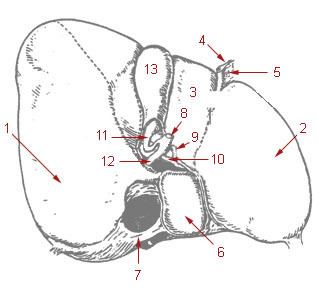Dorlands/Elsevier d_29/12314797 FMA 14539 | Latin ductus cysticus TA A05.8.02.011 | |
 | ||
The cystic duct is the short duct that joins the gallbladder to the common bile duct. It usually lies next to the cystic artery. It is of variable length. It contains 'spiral valves of Heister', which do not provide much resistance to the flow of bile.
Contents
Function
Bile can flow in both directions between the gallbladder and the common hepatic duct and the (common) bile duct.
In this way, bile is stored in the gallbladder in between meal times. The hormone cholecystokinin, when stimulated by a fatty meal, promotes bile secretion by increased production of hepatic bile, contraction of the gall bladder, and relaxation of the Sphincter of Oddi.
Clinical significance
Gallstones can enter and obstruct the cystic duct, preventing the flow of bile. The increased pressure in the gallbladder leads to swelling and pain. This pain, known as biliary colic, is sometimes referred to as a gallbladder "attack" because of its sudden onset.
During a cholecystectomy, the cystic duct is clipped two or three times and a cut is made between the clips, freeing the gallbladder to be taken out.
